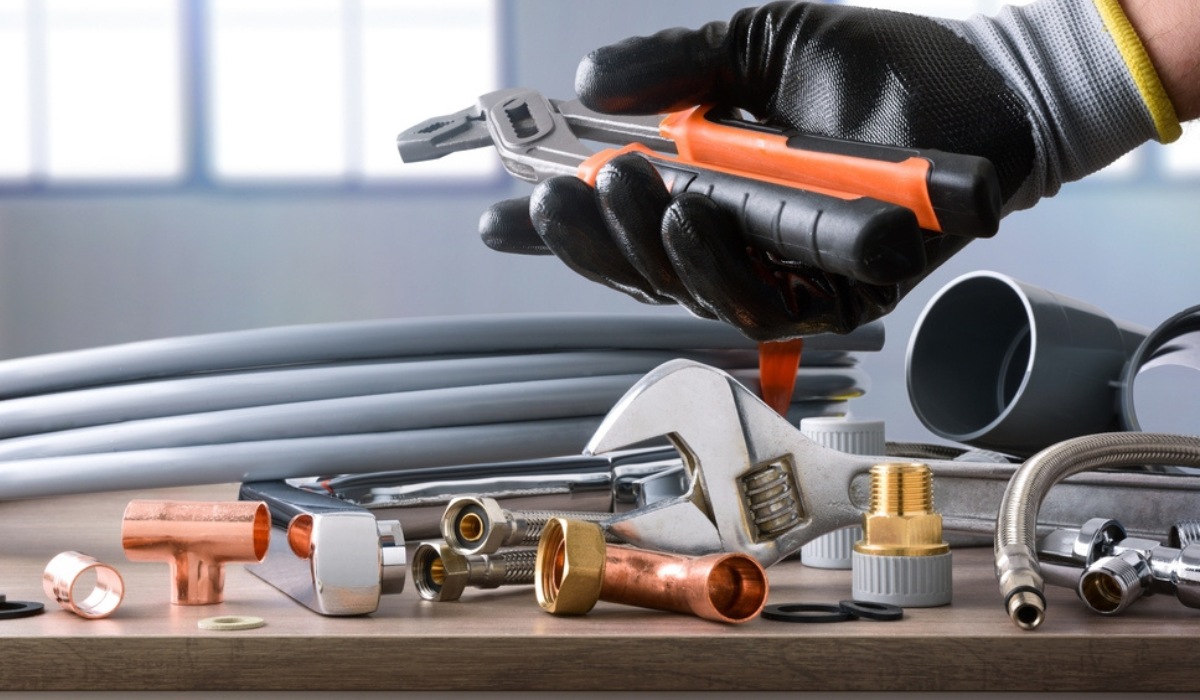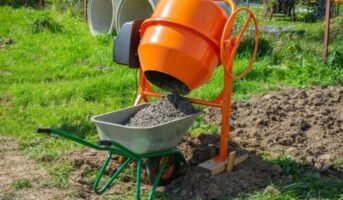Valves are devices used to regulate water flow at certain points in a building’s plumbing system. Each one may be turned to the desired setting to either allow for a steady stream of water or to entirely cut it off. In this article, we are going to discuss the many kinds of valves as well as the instances in which they are often used.
Why are valves important?
When it comes to shutting off water to certain parts of a building, control valves are essential. This is critical in the event of a pipe burst or any other plumbing emergency. They also allow the water supply to be cut off to a fixture so that it may be changed without flooding the house.
In the event of a breakdown, control valves in the right locations and working properly enable building managers to limit the extent of any damage. They also help the management and maintenance staff keep as many tenants as possible out of trouble when anything breaks or has to be replaced.
See also: Types of building materials
Types of valves
Valves may be categorised by a number of criteria that serve to outline their range of uses and desired levels of efficiency. Among the most fundamental methods to filter through the vast variety of valves and discover a suitable match for a task or procedure is to look at the designs of the valves themselves. The following are some common types of valves:
-
Ball Valve

Source: Pinterest
Ball valves are spherical in design. The sphere has a hole in the middle so that it may be rotated. As the pipe is opened, the sphere’s opening matches the pipe’s apex. Closing the valve causes the Pipe to align perpendicular to the sphere. Indicating whether the pipe is open or closed may be done using the valve’s handle as well. The pipe runs perpendicular to the valve’s body when it is open.
Ball valves include positive stops. Thus, they are unnecessary flow control mechanisms. Standard valve stops may be found at 0 degrees, 45 degrees, and 90 degrees. Additionally, once the valve is closed, a tight seal is created by it.
know about: different type of valves
-
Gate Valve

Source: Pinterest
A solid block of metal is placed within gate valves in order to regulate the flow of water. The metal block, which functions as a gate, can be opened by pulling it up, and it can be closed by pushing it down. There is either a crank or a knob that may be turned to adjust the degree of opening that the valve gives. There is no indication that the gate valves are open or closed since there is none shown on the gate valves.
Even while gate valves may be used to establish a suitable closure for the pipes, such valves cannot be utilised to change the flow of whatever is going through the pipe. Gate valves are one kind of valve that might exhibit sensitivity to corrosion. Because of this, the gate valves may get obstructed in their open or closed positions. The Valves do not have a particularly sturdy build.
-
Butterfly Valve

Source: Pinterest
There is a disc within the Butterfly valve. This disc is manufactured to fit precisely inside the pipe’s internal diameter. The disc’s rotation is controlled by the lever. Adjusting the disc’s position in the pipe alters the water’s velocity through it. The butterfly valves usually show a decrease in pressure. This is due to the disc’s persistent presence inside the water supply conduit.
The butterfly valve provides a flow that is reasonably precise. They also provide an ideal seal by using a gasket in their construction.
-
Diaphragm Valve

Source: Pinterest
Water pressure may be adjusted in the plumbing system by adjusting the diaphragm valve’s opening. The design is very similar to that of gate valves. In addition, a dial or knob is used to regulate the diaphragm and, therefore, the water output. After being installed, the diaphragm rests on the saddle to create a watertight seal. A common function of these valves is to cut off the water supply to a set of pipes.
-
Globe Valve

Source: Pinterest
A globe valve is used to restrict or stop the water flow. The globe valve has a stopper that rises and falls as the wheel turns. When the baffle is sealed off, the flow is halted. These globe valves excel in situations when the piping system’s flow is inconsistent. They also work well when the flow has to be controlled. You may compare the shape of these valves to a spherical or a globe. That’s why they call it a globe valve.
-
Check Valve

Source: Pinterest
It is possible to use the check valve to keep water flowing in one direction alone. The ball inside of these valves is what allows you to regulate the flow of fluid via the pipe. If water is being pushed in the incorrect direction, the ball will prevent further movement. Diaphragms, which employ a rubber plate or spinning flap to press and shut the entrance of flow in the incorrect direction, are often included in check valves.
Flow may be brought to a complete halt by using the Stop-check flow valve, which is a fully functional valve. The flow in the correct direction might be blocked in this way as well.
-
Pressure Balanced Valve

Source: Pinterest
Domestic plumbing systems, including showers and bathtubs, rely on pressure valves to maintain a constant water temperature. Located in the centre of a pressure valve, a membrane separates the warm and cold water outflows. When the pressure inside one outlet drops, these valves move to restrict the flow through the other.
-
Washer Valves
This sort of valve is often used to turn off water supplies. They insert a washer into the gap to block the water from leaking out. Washer valves have circular handles for opening and closing. Keep in mind, however, that they often wear out rapidly and stop functioning correctly, so you may need to replace them. When this occurs, it’s time to swap it out with a different size.
How to choose the proper valve size?
Even while valves take up a relatively little amount of room in your pipe process or system, the cost to design and construct them is sometimes a significant fraction of the total. They also have a substantial influence on the system’s performance as well as the expenditures incurred over the long run.
It is crucial to choose the appropriate valve size in order to both maximise profits and guarantee an operation that is safe, precise, and dependable. The first item that should be taken into consideration is the total size of the valve, which should be evaluated not only in terms of its external dimensions but also its interior size and flow velocity.
Costs may increase if a valve is used that is too large or too small for the available area. Choosing a valve that doesn’t deliver the optimal flow rate might cause inaccuracy in flow control or even system failure. If the valve is too narrow, for instance, it may restrict flow in one direction while generating back pressure in another. As the valve is adjusted away from its completely open or completely closed positions, the flow rate will increase dramatically if the size of the valve is too big.
The connection diameter and the valve’s total flow rate should both be taken into account when deciding on the appropriate size. Some valves allow for a great deal of fluid movement, whereas others restrict movement and raise pressure.
FAQs
How many varieties of valves exist?
There are primarily three kinds of automated valves that account for the vast majority of the market share. They have a linear motion and a rotational motion and are self-actuated.
Why do we utilise a gate valve?
When fully closed, a gate valve prevents any further passage via a pipeline, whereas fully open allows for unrestricted flow. So, it can function in either a closed or open state.
What is a special valve?
In addition to isolating, controlling, and checking the flow, a special-purpose valve may do a variety of other tasks. Due to its unique function, this valve is classified as a special valve.
Do ball valves ever leak?
There are a number of potential causes for a ball valve to fail. When debris prevents the valve from closing properly or when the sealing or valve is broken, leakage might occur. When a ball valve is broken or handled incorrectly during shipping, water might leak within, causing major problems.
Housing News Desk is the news desk of leading online real estate portal, Housing.com. Housing News Desk focuses on a variety of topics such as real estate laws, taxes, current news, property trends, home loans, rentals, décor, green homes, home improvement, etc. The main objective of the news desk, is to cover the real estate sector from the perspective of providing information that is useful to the end-user.
Facebook: https://www.facebook.com/housing.com/
Twitter: https://twitter.com/Housing
Email: [email protected]











